Final Fantasy XIII-2 – Review
by Stu
|
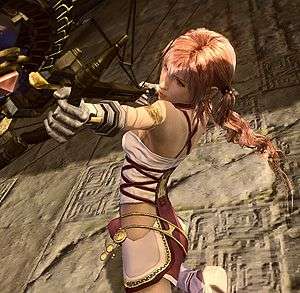 Final Fantasy XIII-2 is, naturally, the sequel to Final Fantasy XIII – a game that clearly split the fanbase in twain. IGN even gave the initial game a “Great” 8.0 and an editor’s choice award, only to then list it as the most disappointing game of 2010. Well that may say something about IGN and inconsistency or perhaps they were bowing to the pressure of the people, reflected interestingly by metacritic which shows a large distortion between the press reviews and the user reviews.
Final Fantasy XIII-2 is, naturally, the sequel to Final Fantasy XIII – a game that clearly split the fanbase in twain. IGN even gave the initial game a “Great” 8.0 and an editor’s choice award, only to then list it as the most disappointing game of 2010. Well that may say something about IGN and inconsistency or perhaps they were bowing to the pressure of the people, reflected interestingly by metacritic which shows a large distortion between the press reviews and the user reviews.
With the above battle ahead of them it may, arguably, have been easier to go straight for the next instalment in the series with a fresh new world, new characters and avoid the risk that players may have been so turned off by FFXIII that they wouldn’t buy a sequel. That isn’t what Square Enix decided to do, however, and so I found myself back in the universe introduced in FFXIII for a second time.
Starting three years after the end of its predecessor, the story begins with a good 15-20 minutes of cut scenes in which Lightning is fighting some great evil in a place that clearly wasn’t in FFXIII. So, yeah, the lengthy cutscenes every few steps or actions are still the order of business but at least this time they are all condensed onto a single disk (even if the amount/length of cutscenes are in no way diminished!).
The initial battle cutscene also introduces one of two new additions in Final Fantasy XIII-2 that attempt to stop the gamers’ body atrophying away between playable content pieces. Heralded as ‘Live Triggers’ it’s basically a quick time event that, if completed successfully, will provide additional rewards at the end of battle and dish an extra amount of damage to the enemy. The second type of live trigger occurs during conversation cutscenes and offers you a choice of dialogue as a thinly veiled illusion of interaction. Complete a number of these in an area and you are given an item reward; unlike the combat live triggers these are only cosmetic in nature and useful if you want to put a funny hat on a pet, etc.
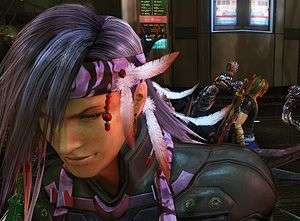 After the cutscene the game begins proper and you are placed in the shoes of Serah, Lightning’s younger sister and the non-player character around which the first game was loosely based from a narrative perspective. As an inverse to the first game, where the driven, emotionless Lightning was looking to free her sister, this time it is Serah who is doing the searching for Lightning. In order to try and pull the player closer to the story and world, Serah is much more emotional and tangible as the ‘little naive girl that lost everything’ but the stereotypical JRPG way of delivery often misses the mark. The game also introduces the second playable character, Noel, who was sent to Serah by Lightning in order to help guide Serah to her.
After the cutscene the game begins proper and you are placed in the shoes of Serah, Lightning’s younger sister and the non-player character around which the first game was loosely based from a narrative perspective. As an inverse to the first game, where the driven, emotionless Lightning was looking to free her sister, this time it is Serah who is doing the searching for Lightning. In order to try and pull the player closer to the story and world, Serah is much more emotional and tangible as the ‘little naive girl that lost everything’ but the stereotypical JRPG way of delivery often misses the mark. The game also introduces the second playable character, Noel, who was sent to Serah by Lightning in order to help guide Serah to her.
Par for the course, you are then exposed to the initial starting area and guided through a series of walkthroughs for the combat system, which again features the paradigm shift class-based system. As you work through the early stage of the game the really interesting part of Final Fantasy XIII-2 presents itself – the ability to travel a timeline. Square Enix have decided to take the JJ Abrams route, that is to introduce an alternate timeline. To this end as you progress through the story you unlock different variants of some of the same locales sat in different timelines. That in itself isn’t the interesting part, though – as a cynic may view that as blatant re-use of assets in a lazy way to pad out the game. The bit that really made me sit back and double-take was that from practically anywhere in the game you can return to the flux and zip to any unlocked destination, leaving time frozen in the location you depart from. It is even possible to reset zones back to their virgin settings as if you’d never set foot there. This also opens up a few choices on seeing what might have happened should you have done something differently.
Unlike the predecessor which was incredibly linear and lacked much in the way of exploration, Final Fantasy XIII-2 encourages a little exploration by adding a smattering of optional locations, opening a slightly different way of completing the storyline, but most of all saving you from progressing to an area before your party is really ready to handle it with no way to retreat. The level checks are still in place with most boss battles, but rather than placing all the high-level content in one very dangerous place there are deadly high level enemies spread throughout, which mostly only start appearing after the earlier level storyline objectives have been completed.
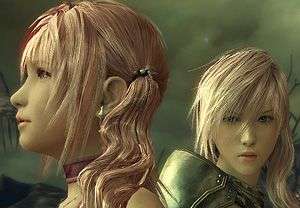 As touched on above, the game now only has two central playable characters. This suits the more dynamic nature of the game where it doesn’t take much to lose track of what’s going on (as often areas are only partially completed ready for a return later in the story) and trying to expand this concept across six characters would have been unmanageable. Instead FFXIII-2 drops in cameos from the first game to progress story or help as guest combatants – it works too, it doesn’t feel too contrived or out of place, weaving its way into the overall story, it also adds another connection to the previous game and above all this approach injects more than just Serah and Noel dialogue.
As touched on above, the game now only has two central playable characters. This suits the more dynamic nature of the game where it doesn’t take much to lose track of what’s going on (as often areas are only partially completed ready for a return later in the story) and trying to expand this concept across six characters would have been unmanageable. Instead FFXIII-2 drops in cameos from the first game to progress story or help as guest combatants – it works too, it doesn’t feel too contrived or out of place, weaving its way into the overall story, it also adds another connection to the previous game and above all this approach injects more than just Serah and Noel dialogue.
For all the improvements to the way the game progresses in terms of story, it isn’t all shiny and amazing. The dialogue is still plagued by iffy voice-overs where the delivery of the lines doesn’t quite fit the situation, or the characters spout lines upon lines of pointless dialogue in order to try an elicit some connection with the player. Sadly this often falls short of being engaging and instead just becomes another unnecessary cutscene to wade through. It’s a long-standing quirk of JRPGs though and unlikely to change, possibly even a part of the charm depending on your mood…they are great moments to dunk a biscuit into your tea without fear of entering a battle and losing that pre-emptive strike bonus!
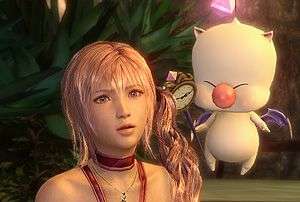 The most irritating aspect of the entire game was the inclusion of Mog, the Moogle that is gifted to Serah by Lightning. Used throughout the game to access hidden items, it becomes a persistent presence in cutscenes and dialogue. Unfortunately Square Enix decided to borrow another JRPG cliché known as the ‘irritating catchphrase character’. Most JRPGs have one and Mog is that inescapable nightmare for Final Fantasy XIII-2. Whilst Liml drove me half-mad in the dire, action-based Star Ocean with her “Mmkay” being added to the end of every dialogue, the bane of Final Fantasy XIII-2 is Mog and the addition of “kupo” to every sentence.
The most irritating aspect of the entire game was the inclusion of Mog, the Moogle that is gifted to Serah by Lightning. Used throughout the game to access hidden items, it becomes a persistent presence in cutscenes and dialogue. Unfortunately Square Enix decided to borrow another JRPG cliché known as the ‘irritating catchphrase character’. Most JRPGs have one and Mog is that inescapable nightmare for Final Fantasy XIII-2. Whilst Liml drove me half-mad in the dire, action-based Star Ocean with her “Mmkay” being added to the end of every dialogue, the bane of Final Fantasy XIII-2 is Mog and the addition of “kupo” to every sentence.
It might not bother you at first, kupo. But as the game and story begins to unfold and you become interested in the cutscenes, the instant Mog appears you die a little inside, kupo. After a while, even the utterance of kupo sends chills up your spine, your mouth involuntarily turning to a snarl and a beam of hatred firing from your eyes towards the screen, kupo. Sometimes the use of kupo at the end of a sentence doesn’t even make any kind of grammatical sense, kupo. The word has no meaning, kupo, it doesn’t seem to be a person, thing or action, kupo. AAAARRRRGGGGGHHHH.
Insanity inducing dialogue aside, the general story for Final Fantasy XIII-2 is much improved and far less convoluted. The characters are much more likable but still forgettable, they certainly won’t rank highly in a favourite Final Fantasy character chart but are a definite improvement over the previous game where I would have happily watched them all die without a care.
As is to be expected after FFXIII, the visuals throughout the game are quite stunning. To my untrained eyes and lack of analysis equipment it looked as though the same engine has been used to power the sequel and relative speed of release for FFXIII-2 hasn’t affected the art quality in any way. Throughout the game you’ll be treated to a host of environments from broken, dark and abandoned coliseums to picturesque prairie hills. I’ve not noticed anything major in the way of tearing or slowness whilst playing and the Final Fantasy graphical styling is a perpetual companion throughout. The colour palette is as every bit as vibrant as you’d expect and the typical glows, runes and crystalline designs are prevalent throughout. Characters are well modelled, the clothing styles range from the outlandish and unique through to the usual array of NPC clones. Graphically it is every bit a continuation and extension of FFXIII.
Another slight change comes in the form of the soundtrack, whilst re-using a number of tracks from Final Fantasy XIII (including that one by Leona Lewis – yeah, I know…*sigh*) it tries to bring in a fresh set of sounds and, although they don’t always work (just sit in the crystarium screen for several minutes), a change from the usual instrumental soundtrack was welcome.
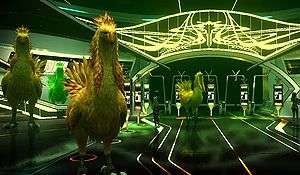 The meat and bones of final Fantasy XIII-2 is obviously the combat system. It is essentially the same as before, with each party member being able to take on a number of roles such as tank, debuffer, healer, etc that are set pre-battle in a selection of party setups. Once you enter battle you can then switch between these setups, or paradigms, to dynamically react to opponents action and tactics. For instance, you may choose an offensive formation with damage dealers but switch to a more conservative paradigm with a healer and a tank should the opponent prove more difficult.
The meat and bones of final Fantasy XIII-2 is obviously the combat system. It is essentially the same as before, with each party member being able to take on a number of roles such as tank, debuffer, healer, etc that are set pre-battle in a selection of party setups. Once you enter battle you can then switch between these setups, or paradigms, to dynamically react to opponents action and tactics. For instance, you may choose an offensive formation with damage dealers but switch to a more conservative paradigm with a healer and a tank should the opponent prove more difficult.
One major change to the combat is the ability to recruit defeated monsters. Each monster has only one class, but you can add up to three monsters into your paradigm deck. Similarly to your characters, the monsters can be upgraded via the Crystarium (an upgrade system where you spend XP to enhance your characters) but their currency for enhancement is via dropped components from battles – queue the JRPG mandatory grinding sessions. Some of the monsters also have unique abilities that you cannot get via the two main characters, making developing a range of monster allies a wise investment should you want an easier ride to total completion. If that wasn’t enough, you can infuse monsters with others and pull across some of their useful abilities you may have unlocked earlier. This helps immeasurably in creating ‘all-round’ versions of classes that you can then back up with specialists for specific battles.
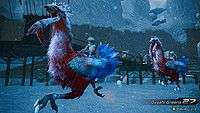 |
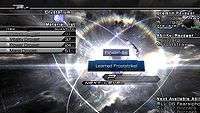 |
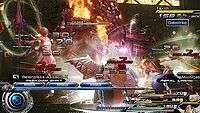 |
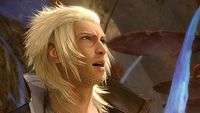 |
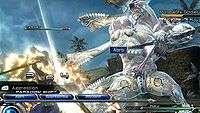 |
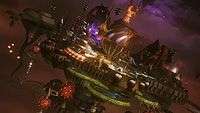 |
Once more a lot of micro-management in combat is removed, you only control the actions of the party leader, the others carrying out their role as per the paradigm. The auto function returns and for most battles is all you’ll ever press, as the AI determines the most damaging attacks for the enemy you face. You can, of course, manually queue up abilities but this is a waste of effort for the most part but, having said that, there is a large degree of mastery associated with combat that you will likely need for certain encounters unless you are way above the required party level minimums. A well levelled party that engages in grinding sessions will mostly walk through the campaign, but staving off the grinding presents a much larger challenge and that is when the micro-managing fans will get their kicks. You can tweak paradigms for normal, group or individual attacks for example. The ATM bar reset upon paradigm shift is back allowing savvy players to skip the bar refill waiting period every other turn.
Components are used in a slightly different manner too. Rather than upgrading items in a complicated system of multipliers and grinding, you now use components to upgrade monsters and buy equipment. The change is subtle but far less complicated, as well as showing you what components you need to get a new item from the vendor without needing to refer to a spreadsheet or guide. The ability to freely flit between locations and reset them via the Historia Crux means that you can grind ad-hoc and will never find yourself in a position where you can no longer access anything you may need.
When you don’t fancy combat and want to kick back and relax then there is a casino buried in the timeline. Once there, you can race Chocobos, gamble away hard earned gill and visit a Mystic for game altering extras. You have to hand it to Square Enix, they have tried and, to a point, successfully provided non-combat entertainment that isn’t a dull chore. I don’t mind admitting I became a little obsessed with winning the Chocobo races and wasted a lot of money and combat grinding getting a tip-top bird into action!
Square Enix has managed, once more, to make the game accessible to everyone but allowing a layer of complexity to sit below for those who wish a more hands-on experience to really tailor it to suit themselves. You could sit and pour over charts of monster types, the character crystarium upgrades and most efficient grinding areas or you can play the game through with little to no observation of the finer details.
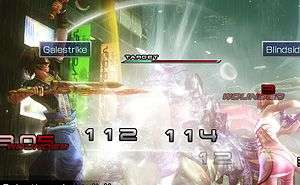 I’ve alluded to it already, but be prepared for the grind. That mainstay of the genre hasn’t dulled a bit. As usual, once the storyline is out of the way you have the choice of continuing on and levelling the party (seemingly forever) in order to take on the heavyweight monsters dodged throughout the earlier campaign. At least this time around, the whole world is your oyster for grinding purposes although, realistically, for any real time vs progression benefits you’ll likely only end up in a few places and the amount of grinding to reach max level seems a lot less than FFXIII.
I’ve alluded to it already, but be prepared for the grind. That mainstay of the genre hasn’t dulled a bit. As usual, once the storyline is out of the way you have the choice of continuing on and levelling the party (seemingly forever) in order to take on the heavyweight monsters dodged throughout the earlier campaign. At least this time around, the whole world is your oyster for grinding purposes although, realistically, for any real time vs progression benefits you’ll likely only end up in a few places and the amount of grinding to reach max level seems a lot less than FFXIII.
There is one final thing to mention that doesn’t really sit anywhere else: when entering the game from the second time onwards, upon loading you get treated to a ‘story so far’ montage covering the story progress. In a game like Final Fantasy it can be easy to load a game after a few days off, look at the myriad of open portals in the Historia Crux (as that is always where you start off from a loaded session) and think “WTF was I doing again?”. Thankfully this tiny little addition goes some way to rounding up what you’ve been doing to the point it should jog your memory as to where you were and what you’d been up to. Such a simple thing but one of those little bells and whistles that makes a difference… at least to me.
Pros- Sidequests and hub areas are back
- Party progression and tailoring the setup is more advanced
- You don't have to get bogged down in stats, setups and manual control should you not desire
- Square Enix have improved over Final Fantasy XIII in most areas without introducing new flaws
- Component grinding has been slimmed down to a more manageable level
- It is undeniably ‘Final Fantasy’ in what it does
- At its core it really is still Final Fantasy XIII with a few alterations
- The story won't set the world alight, although a good concept, and the associated voice acting and story-telling methods are very stereotypical for a JRPG
- Possibly not different enough to entice or convert those that didn't like FFXIII
- Xbox players: a lot of achievements are unusually valued, unless carefully planned or maxed, it will shift your Gamerscore from the 0/5 equilibrium!
Overall Final Fantasy XIII-2 brings an improved experience to bear, but only really for those that are looking for it, as other than the combat functions, and sidequests, the real meat of the additional features arrive late to end game. If you knew nothing about either game and were to give a cursory glance at both running side by side for a few minutes then you'd be forgiven for thinking it was the same title (one obviously at a different stage of the campaign). That said, the differences are there and for me it made the game much more enjoyable.
Anyone citing the 'auto' combat selection as a negative is kind of missing the point. Sure, you can rely on the AI to pinpoint the best attacks and play it that way but the deeper option is there, and so bemoaning the auto method is just lazy assassination where it isn't due. The stalwart of any turn based RPG title is the combat mechanic and you cannot deny that Final Fantasy delivers in this regard.
On the other hand, Final Fantasy XIII-2 is yet another JRPG that can't escape the black hole of poor engagement in terms of story and emotion. Whilst being quite a funky story in concept, it is tainted by pointless emotional sentiments, poorly executed dialogue and characters as enjoyable to watch as tattooing your own eyeball.
Basically it all boils down to your feelings on FF XIII. If you enjoyed it, you'll very much enjoy FF XIII-2 but if you didn't find the predecessor to your taste then there isn't enough change likely to pull you in. Likewise, if you haven't played final Fantasy XIII then pick it up cheap now and give that a go before spending full retail on the sequel.
Last five articles by Stu
- When A Choice Isn't Really A Choice At All
- Best of 2013: Next-Gen: #Fail
- Deadfall Adventures - Review
- Assassin's Creed IV: Black Flag - Review
- The Inner World - Review

















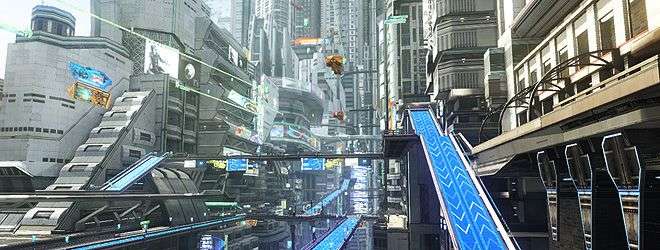
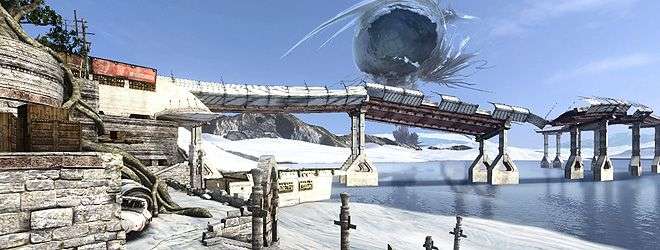
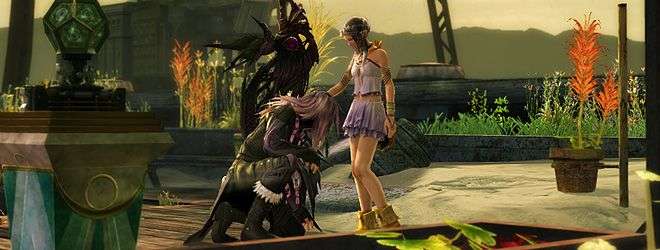






Well Stu, I thought this was a pretty good, well detailed review, kupo!
Sadly I didn’t have time or the patience to dive into the previous instalment, so I might have to give this a miss as well, kupo. =[
Still, here’s hoping those who liked the original get invested in it or pick it up based off this review, kupo!
Also, moogles saying kupo is a thing that’s been going on in the series a while, kupo. I guess it’s probably more irritating with speech attached, though, kupo!
Great review, Stu. I ain’t touching this fucker though!